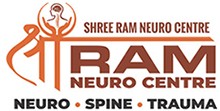




Pediatric Neurosurgeon
Home / Pediatric Neurosurgeon


Hydrocephalus (Shunt Surgery)
Brain, Spine and Joint clinic provide you with Pediatric Neurosurgeon for treating the neurological problems and disorders amongst children, whether acquired or existing from birth. Hydrocephalus (Shunt Surgery) is a neurological disorder in which ventricles get filled with fluid deep within the brain and cause pressure on the brain that causes damage to brain tissues and brain. The problem can occur at any age, but unfortunately, it has high records of affecting the infants and adults above 60 years of age. Symptoms that prompt the Hydrocephalus amongst infants include an increase in the size of the head, bulging of the head. It also leads to loss of sleep, the sensation of touch, dizziness, and may cause seizures. Implanting shunt in ventricles of the brain helps to drain out fluid into the body where it gets absorbed. The shunt has a ventricular catheter that drains out the spinal fluid into the body and a valve to control the flow. The procedure involves surgery to place a ventricular catheter at the back of the head and another end at the abdominal cavity, chamber of the heart, and area around the lung to drain out the excess fluid. A valve controls the draining of too much or too little fluid. Repeated surgeries become essential to repair, remove, or replace the shunt for effective and smooth functioning.
Endoscopic Third Ventriculostomy
Endoscopic third ventriculostomy Shunt infection or failure in some risks and complications in surgery and processes of replacement over the period makes people look for another option. Endoscopic third ventriculostomy (ETV) is an alternative to shunt surgery. It involves creating a bypass in the head for eliminating the cerebrospinal fluid. It gets its name from the area of the brain wherein surgery is done between the third and fourth ventricle as it is the most commonplace for blockage. Endoscopic third ventriculostomy Surgery facilitates the flow of fluid from the third ventricle to other fluid chambers through the new openings made through bypass surgery.
Spinal Dysraphism
Spinal Dysraphism is a term that signifies problems related to the spine, spinal cord, and nerve roots, primarily at the time of birth. Any disorder that relates to Spinal Dysraphism has its origin in the womb when during embryo development, neural plates and neural tubes do not develop properly. During Spinal Dysraphism, neural tube in the spinal cord remains exposed to the environment as it does not close properly and, continuous exposure leads to degeneration of nervous tissues which, then start affecting the motor and sensory developments. Spinal Dysraphism takes different forms depending on the intensity and nature of the problem. Myelomeningocele is an extreme form of Spinal Dysraphism in which sac filled with fluid, spinal cord, and nerves developed outside the body is visible behind the back of the newborn. Spina bifida occulta is a disorder in which there are gaps in the bones of the spine that makes it difficult for the baby to move, affects the control of the bladder. Split cord malformation diastematomyelia is a spinal deformity that an infant has ever since his birth. The spinal cord is split or divided. Spinal cord lipoma lipomyelomeningocele occurs due to fat accumulation around the spinal cord without causing no bone or skin deformities, but affecting the bowel and urinary system. Dermoid and epidermoid spinal cysts are growths in the spine that do not spread and do not lead to cancer, but the pressure they exert on the spinal cord, nerves can rupture them and cause a problem
Opening Hours
- Monday – Friday 8.00 – 18.00
- Saturday 8.00 – 15.00
- Sunday Closed
- Holidays Closed
Book An Appointment
Look for our specialty clinic in VIC for the best service
Lorem ipsum dolor sit amet, consectetur adipiscing elit. In nec est rhoncus, congue sem sit amet, tempor nunc. In purus ipsum,
